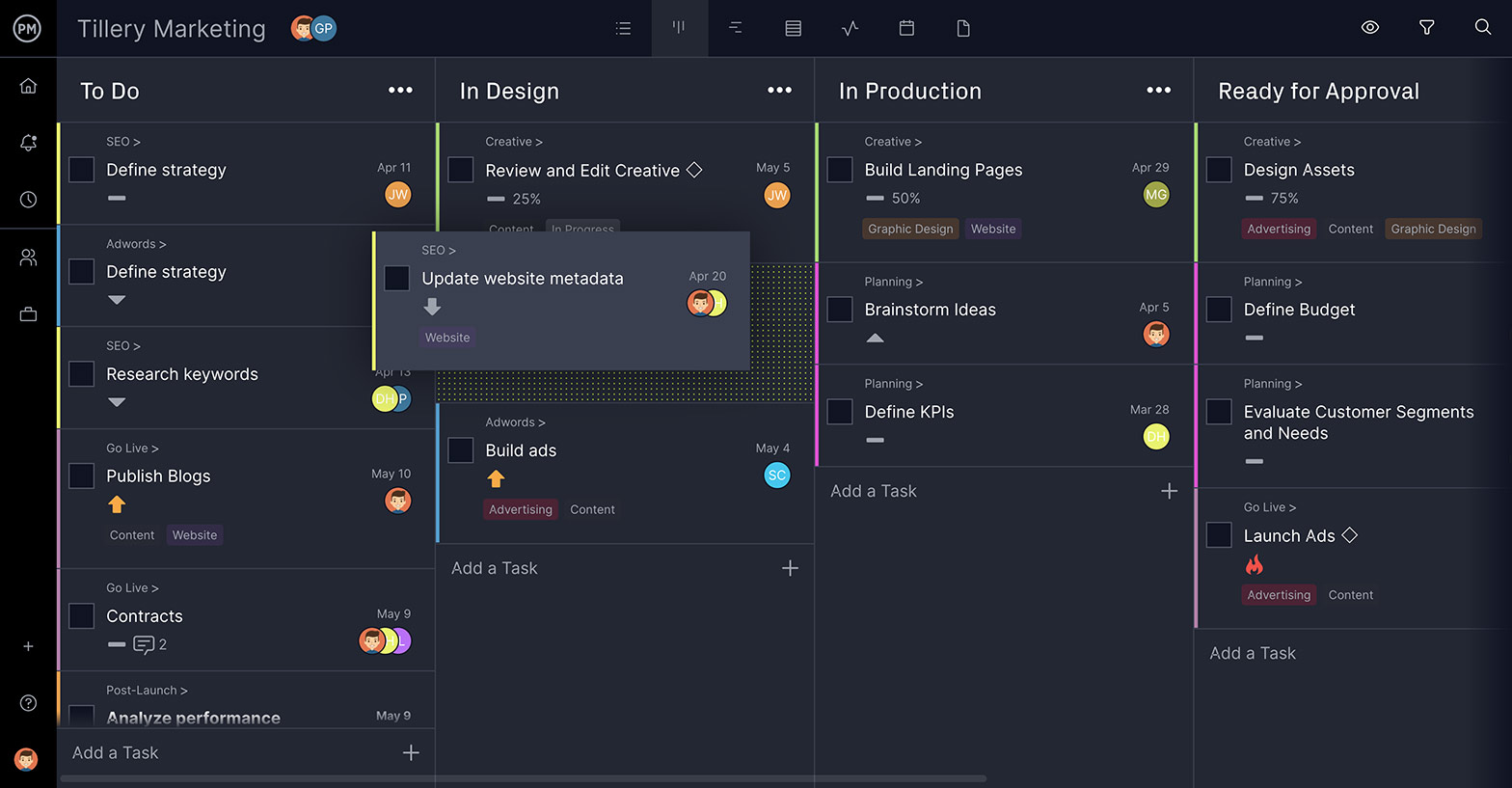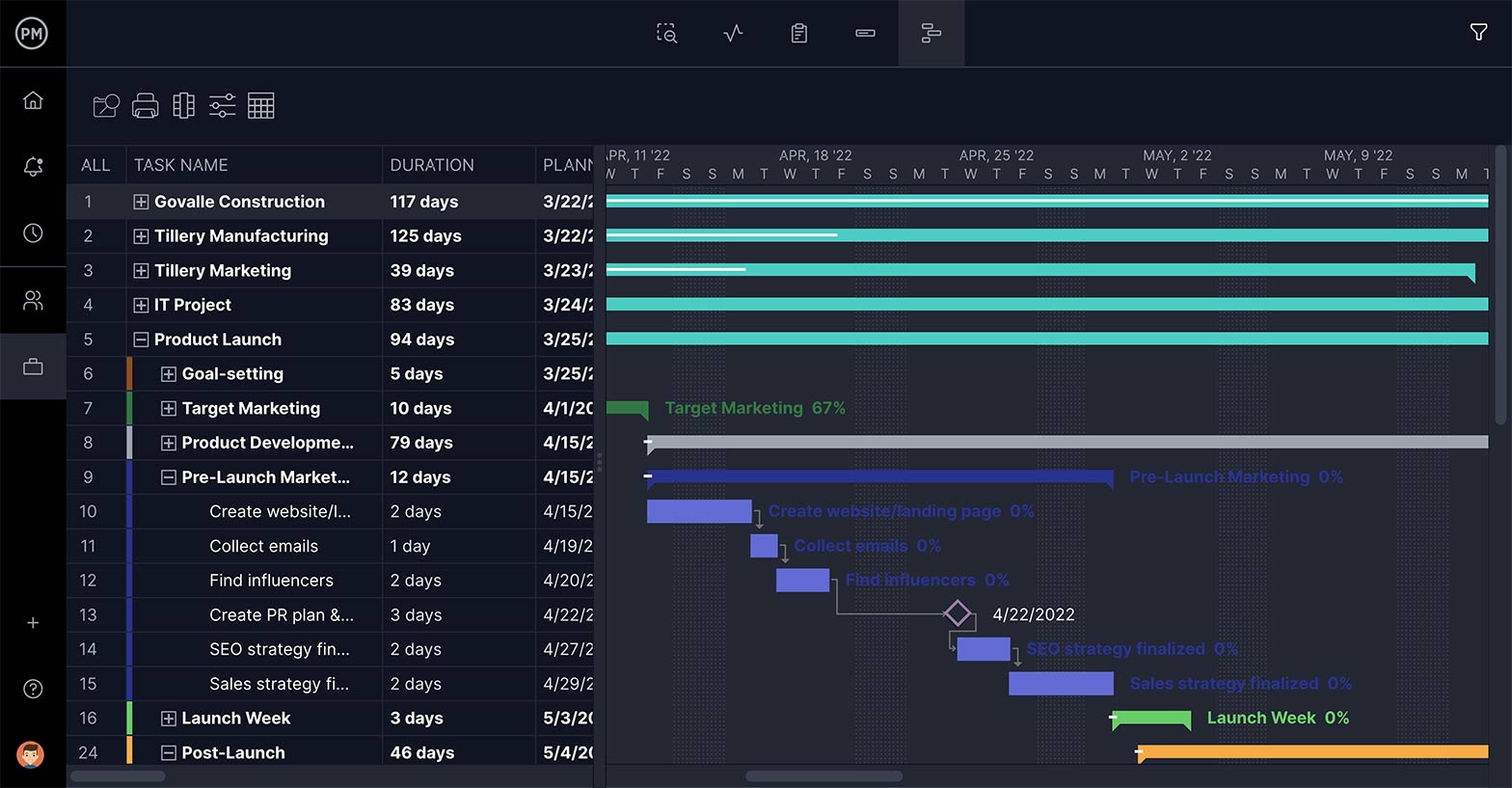Planning for a software development project is essentially choosing one path forward to complete tasks and achieve your goals. But things don’t always work out as planned, and issues such as technical debt can affect your initial project plan.
Sometimes you have to deviate from your initial software development plan and take a shortcut when managing tasks or user stories. This is often due to the various forces at play that impacts decision-making such as customer feedback or changes to the project budget, schedule or resources.
But these shortcuts come with costs that can derail a project later in its life cycle. There’s a term to explain this idea: technical debt. Like any form of debt, it shouldn’t be taken lightly.
Keeping track of shortcuts and ensuring your team is always on the same page is one way to avoid technical debt. ProjectManager is work and project management software that delivers real-time data on a collaborative platform so there’s one source of truth. It’s also collaborative to the core to keep everyone connected whether you’re working with an agile, scrum, or any type of team. Get started today for free.

Let’s review the definition of technical debt, types of technical debt, how to prevent it, and how to measure it in case it occurs in your software development projects.
What Is Technical Debt?
The concept of technical debt comes from software development, and it was first coined by Ward Cunningham, one of the proponents of the agile manifesto. The term “technical debt” refers to the costs of having to go back and resolve problems that arise because of an earlier decision to take the easy route instead of the best one when executing a software development project.
In a sense, that choice for an easy solution is incurring debt to the project that has to be paid later. Just like monetary debt, if technical debt isn’t paid back, it can accumulate interest. That makes it harder to implement those necessary changes later.
That doesn’t mean that technical debt is all bad. It’s often needed to move forward with a project. But mostly, technical debt (especially when it’s unpaid and incurs interest on top of interest) is a danger that all project managers must identify, be cognizant of, and avoid if possible.
Related: The Risk Management Process in Project Management
Types of Technical Debt
According to Martin Fowler’s “technical debt quadrant” theory, there are 4 types of technical debt that are widely accepted in the software development industry. Here’s a brief description of each of the quadrants describing the 4 types of technical debt proposed by Fowler.
Deliberate & Reckless
This occurs when the software development team is aware that a particular decision will result in technical debt but continues forward despite any consequences that can arise. The most common cause for this is prioritizing a speedy delivery over a well-planned development process.
Deliberate & Prudent
This occurs when the team knows that a decision will cause technical debt, but pushes forward. The difference is that in this case, the team is also conscious of the consequences from the beginning and knows it’ll be necessary to re-visit and apply best practices once there’s time for it.
Inadvertent & Reckless
This is the most harmful type of technical debt there is. Inadvertent and reckless technical debt occurs when a software development team isn’t applying best practices and doesn’t know that technical debt is being accumulated. This makes it impossible to plan solutions or measure the negative impact of the debt.
Inadvertent & Prudent
This technical debt occurs when a team applies best practices on every step of the software development roadmap, but for some reason, it still generates technical debt. Team members have inadvertently created technical debt, but as part of a prudent team, they will fix any issues once they re-visit tasks.
Technical Debt Examples
The best way to understand technical debt is to look at some examples. Here are some examples to illustrate the different types of technical debt you might encounter.
For our examples, let’s imagine that a software development company is creating a new project management software. It has announced a release date and the company is known for timely deliveries.
Deliberate & Reckless
- The team decides it has no time and deliberately cuts down its product features. It doesn’t plan on replacing them and prioritizes speed over quality.
- The team decides to reduce the time spent on coding by allocating less time for developers, resulting in poor coding.
Inadvertent & Reckless
- There are team members who don’t have the necessary skills to write code for the software. However, they’re still allowed to do it. As they code, they generate and accumulate technical debt.
- Due to their lack of skills, they’re not aware of the harm they’re causing to the project, so it’s not possible to have a prudent approach until it’s too late.
Inadvertent & Prudent
- In this case, a capable team works on the software’s code. However, they inadvertently generate technical debt due to unseen coding mistakes.
- Due to their skills, they’re able to then identify and pay the technical debt later.
What Causes Technical Debt?
There are many ways that a project can accrue technical debt, but some causes are more likely to occur over the course of a project. They are listed below:
- Lack of Planning: This can not sufficiently define things upfront. That is, if you start development before completing the project design in order to save time, you’re likely going to have to go back and rework things later.
- External Forces: This can include business pressure. Often the marketplace or business executives will demand the release of something sooner than later, even if all the necessary changes aren’t yet completed. This is fairly common in the field of product management.
- Ignorance: If a project manager and the project team are ignorant of technical debt, then they’re almost fated to experience it. If the project follows a process that doesn’t include the implications of technical debt, it is moving forward without the knowledge of inherent risk to the project.
- Lack of Flexibility: Not being flexible and able to pivot when change requires it, will also lead to technical debt. It’s important to be flexible as a manager.
- Inadequate Documentation: Not having the proper documentation done at the time is a technical debt that will have to be paid later.
- Lack of Collaboration: Not sharing knowledge among the project group impacts efficiency, which in turn will create technical debt. Using online collaboration tools can help improve the exchange of key information.
- Parallel Projects: Running parallel development makes for technical debt as the work needed to merge the changes into a single source creates extra work.
- Requirements Change: If the requirements of a project change that will create technical debt as well.
- Neglecting Industry Standards: Not following industry standards that will then have to be dealt with later is another example of technical debt.
- Poor Leadership: Anything from a lack of ownership to poor leadership and last-minute changes are all potential causes of technical debt.
How to Prevent Technical Debt
As noted, technical debt isn’t always a bad thing as it can get your product to market faster than the competition. As you get feedback, bugs can be squashed and the product develops while it’s generating revenue for the organization.
The money made can be used to pay for the technical debt accrued, but technical debt can be unexpected due to unrealistic time or resource constraints. There are ways that a project manager can avoid technical debt, six of which are outlined below.
1. Talk About Technical Debt
This is key. If people are aware of technical debt, then they’ll be more likely to identify paths that will result in it. Everyone in the project group, especially team members, must be positioned to offer insight into technical debt, which the project manager can then choose to act or not act on. Bring it up in planning meetings, and keep the focus on it. Pose questions such as, “If a shortcut is the right choice, what is there to gain? What are the challenges and future implications?”
2. Advocate for Organizational Maintenance
By taking time to advocate for organizational maintenance, you’re addressing issues and maintaining processes. Make this the standard by which you run the project. Therefore, make sure there is time in the schedule to deal with technical debt sooner than later, so you can advance in the project while reducing vulnerabilities and weaknesses. Total quality management can help with regular organizational maintenance.
3. Use KPIs to Track Project Expectations
By having KPIs on your project performance or development, you can better prioritize work that addresses technical debt. For more help on this, read about 8 essential KPI metrics for teams.
4. Have Your Team Track Technical Debt as They Do Their Tasks
Instead of having various status updates, combine them under one roof. As a result, technical debt can be tracked and prioritized with other tasks to ensure they don’t slip through the cracks.
5. Empower Teams to Plan Around Technical Debt
Use technical debt to engage your team. Make it part of a collaborative planning effort and get feedback to stay on track.
6. Don’t Ask Teams to Do Too Much Too Soon
This is a surefire way to accrue technical debt. Consult with your team about realistic deadlines and goals that they can meet without having to cut corners and possibly create technical debt.
Manage Your Technical Debt with ProjectManager
ProjectManager is award-winning software that has the flexibility to serve agile and scrum teams. It can help you track changes and in so doing reduce your technical debt. Real-time data is shared across the tool and teams are able to collaborate no matter where or when they work.
Keep Agile Teams Connected with Interactive Kanban Board
Agile teams are self-directed and need to have the autonomy to manage their work. Our kanban boards allow them to manage their backlog and plan together for upcoming sprints. Product owners get visibility into their process and can reallocate resources as needed to avoid bottlenecks.

Create Software Development Roadmaps with Online Gantt Charts
Use our Gantt charts to create software development roadmaps and get a detailed overview of product development. Get a real-time, high-level summary of work being done by your team and use that information to keep the project on track. See how sprints contribute to the bigger picture, make better decisions in terms of what’s a priority and keep stakeholders informed.

Track Technical Debt With Real-Time Dashboards
To avoid technical debt derailing your project, use our live dashboard. There’s no setup required as with inferior software packages and it automatically gathers and calculates real-time data. The results are displayed in colorful graphs that track six project metrics to give you a high-level view of your progress and performance.

Teams can communicate at the task level and are notified by email and in-app alerts when someone responds to comments or updates tasks. Product owners can use one-click reports to dive deeper into the data and easily share reports with stakeholders so they’re regularly updated. ProjectManager has the features you need to manage your technical debt.
If you’re aware of technical debt, you can avoid it. But only if you have the right tools to help your team collaborate, track and report on it. ProjectManager is a cloud-based project management software that offers a collaborative platform for project managers and team members to freely communicate at the task level. See how it can help you identify and eradicate technical debt in your projects by taking this free 30-day trial today.

